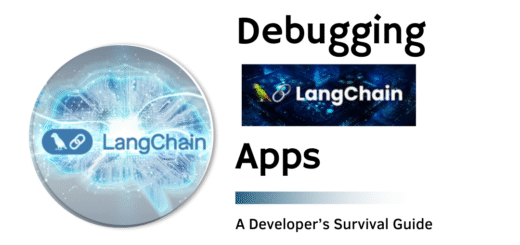Turning Your R Analysis Into Interactive Web Apps
Remember that time you built a brilliant analysis, but your manager kept asking for “just one more variation”? What if you could hand them a tool to explore the data themselves? That’s exactly what Shiny lets you do—transform your R code into interactive web applications that anyone can use.
What Shiny Actually Does
Shiny is like a translator that speaks both R and web browser. It takes your data analysis and wraps it in a web interface, letting people interact with your work through sliders, dropdowns, and buttons instead of R code.
Think of it this way: instead of emailing someone a static sales chart, you give them a dashboard where they can select different regions, time periods, or product categories and watch the chart update instantly.
How Shiny Apps Work: The Magic Behind the Scenes
Every Shiny app has two main parts that work together:
- The Frontend (What Users See)
This is the interface—the buttons, sliders, and charts that users interact with. You build this using simple R functions that create web elements. - The Backend (The Brain)
This is your R code that does the actual analysis. It waits for user input, processes data, and sends results back to the frontend.
The magic happens through “reactivity”—when a user changes something (like moving a slider), Shiny automatically knows which parts of your analysis need to rerun and updates only what’s necessary.
Building Your First Interactive Dashboard
Let’s create a sales analysis tool that would actually help a business team:
r
library(shiny)
library(ggplot2)
library(dplyr)
# Define the user interface
ui <- fluidPage(
titlePanel(“Sales Performance Explorer”),
sidebarLayout(
sidebarPanel(
# Controls for users to filter data
selectInput(
“region_select”,
“Choose Regions:”,
choices = c(“Northeast”, “Southeast”, “Midwest”, “West”, “All”),
selected = “All”,
multiple = TRUE
),
dateRangeInput(
“date_range”,
“Select Date Range:”,
start = Sys.Date() – 365,
end = Sys.Date()
),
sliderInput(
“min_sales”,
“Minimum Sales Amount:”,
min = 0,
max = 10000,
value = 0
),
actionButton(“update_btn”, “Update Dashboard”)
),
mainPanel(
# Where results will appear
plotOutput(“sales_trend_plot”),
plotOutput(“regional_breakdown”),
tableOutput(“summary_stats”)
)
)
)
# Define the server logic
server <- function(input, output, session) {
# Load and prepare data
sales_data <- reactive({
read.csv(“data/sales_records.csv”) %>%
mutate(date = as.Date(date))
})
# Filter data based on user selections
filtered_data <- eventReactive(input$update_btn, {
data <- sales_data()
# Apply region filter
if (!”All” %in% input$region_select) {
data <- data %>% filter(region %in% input$region_select)
}
# Apply date filter
data <- data %>%
filter(between(date, input$date_range[1], input$date_range[2]))
# Apply sales amount filter
data <- data %>% filter(sales_amount >= input$min_sales)
return(data)
})
# Create sales trend plot
output$sales_trend_plot <- renderPlot({
data <- filtered_data()
ggplot(data, aes(x = date, y = sales_amount)) +
geom_line(color = “steelblue”, size = 1) +
labs(title = “Sales Trend Over Time”,
x = “Date”,
y = “Sales Amount ($)”) +
theme_minimal()
})
# Create regional breakdown
output$regional_breakdown <- renderPlot({
data <- filtered_data()
data %>%
group_by(region) %>%
summarise(total_sales = sum(sales_amount)) %>%
ggplot(aes(x = reorder(region, total_sales), y = total_sales)) +
geom_col(fill = “lightblue”) +
coord_flip() +
labs(title = “Sales by Region”,
x = NULL,
y = “Total Sales ($)”) +
theme_minimal()
})
# Create summary statistics table
output$summary_stats <- renderTable({
data <- filtered_data()
data %>%
summarise(
`Total Sales` = sum(sales_amount),
`Average Sale` = mean(sales_amount),
`Number of Transactions` = n(),
`Top Region` = names(which.max(table(region)))
)
})
}
# Run the application
shinyApp(ui = ui, server = server)
This app gives business users the power to explore sales data without touching R. They can see how different regions perform, identify trends over time, and focus on specific sales ranges.
Making Your Apps More Useful
Add Interactive Elements
r
# Interactive data table
output$detailed_data <- DT::renderDataTable({
filtered_data() %>%
select(customer_name, date, region, sales_amount)
})
# Value boxes for key metrics
output$total_sales_box <- renderValueBox({
valueBox(
value = paste0(“$”, format(sum(filtered_data()$sales_amount), big.mark = “,”)),
subtitle = “Total Sales”,
icon = icon(“dollar-sign”),
color = “green”
)
})
Handle Large Datasets Efficiently
When working with big data, you don’t want to reload everything on every click:
r
server <- function(input, output, session) {
# Load data once when app starts
all_data <- reactive({
# Use data.table for faster processing
data.table::fread(“data/large_sales_dataset.csv”)
}) %>% bindCache(“sales_data”) # Cache the data
# Only process filtered subset
filtered_data <- reactive({
data <- all_data()
# Fast filtering with data.table
if (input$region != “All”) {
data <- data[region == input$region]
}
data[between(date, input$date_range[1], input$date_range[2])]
})
}
Real-World Example: Customer Segmentation Tool
Here’s how you might build an app that helps marketing teams understand customer behavior:
r
ui <- fluidPage(
titlePanel(“Customer Segmentation Analysis”),
tabsetPanel(
tabPanel(“Segment Explorer”,
selectInput(“segment_type”, “Segmentation Method:”,
choices = c(“By Spending”, “By Frequency”, “By Region”)),
plotOutput(“segment_plot”),
tableOutput(“segment_table”)
),
tabPanel(“Customer Details”,
selectInput(“selected_customer”, “Choose Customer:”,
choices = NULL),
tableOutput(“customer_profile”),
plotOutput(“purchase_history”)
),
tabPanel(“Campaign Planning”,
numericInput(“budget”, “Marketing Budget:”, value = 10000),
selectInput(“target_segment”, “Target Segment:”, choices = NULL),
actionButton(“simulate_btn”, “Simulate Campaign”),
tableOutput(“campaign_results”)
)
)
)
This kind of app turns complex customer analysis into something the marketing team can actually use to plan campaigns and allocate budgets.
Deploying Your Apps So People Can Actually Use Them
Building an app is useless if nobody can access it. Here are your deployment options:
- ShinyApps.io (Easiest)
r
# Install the package
install.packages(‘rsconnect’)# Deploy with one command
rsconnect::deployApp(‘path/to/your/app’) - RStudio Connect (Enterprise)
r
# Deploy to your company’s server
rsconnect::deployApp(
appDir = “sales_dashboard”,
appName = “sales-performance”,
account = “company-name”
)
- Docker (Full Control)dockerfile
FROM rocker/shiny:4.3.0
# Install required packages
RUN R -e “install.packages(c(‘shiny’, ‘ggplot2’, ‘dplyr’, ‘DT’))”
# Copy your app
COPY app /srv/shiny-server/app/
EXPOSE 3838
Common Patterns for Success
- Keep It Fast
Users hate waiting. Use caching and efficient data processing:
r
# Cache expensive computations
expensive_analysis <- reactive({
compute_customer_lifetime_value(filtered_data())
}) %>% bindCache(input$region, input$date_range)# Progress bars for long operations
withProgress(message = ‘Analyzing data…’, value = 0, {
for (i in 1:10) {# Do work
incProgress(1/10)
Sys.sleep(0.1)
}
})
- Handle Errors Gracefully
r
output$sales_plot <- renderPlot({
req(filtered_data()) # Ensure data is available
tryCatch({
if (nrow(filtered_data()) == 0) {
showNotification(“No data available for selected filters”, type = “warning”)
return(ggplot() + labs(title = “No data to display”))
}
# Create the plot
create_sales_plot(filtered_data())
}, error = function(e) {
showNotification(“Error creating plot”, type = “error”)
ggplot() + labs(title = “Unable to display chart”)
})
})
- Make It Look Professionalr
ui <- navbarPage(
“Company Analytics”,
theme = shinythemes::shinytheme(“flatly”),
tabPanel(“Sales”,# Sales content
),
tabPanel(“Customers”,
# Customer content
),
tabPanel(“Inventory”,
# Inventory content
),
footer = div(
class = “footer”,
“Data updated:”, textOutput(“last_updated”)
)
)
Conclusion: From Analyst to App Builder
I recently visited a client who had one of my Shiny apps open on their second monitor all day. “It’s like having a data analyst on demand,” they told me. That’s the power of Shiny—it scales your impact beyond one-on-one analysis.
The transition from writing scripts to building apps changes how you think about data work:
- From answering questions to providing tools that help people find their own answers
- From static reports to living dashboards that stay current
- From technical audiences to anyone in your organization
- From one-time analysis to reusable solutions
Start small. Take one analysis you find yourself repeating and turn it into a simple app. You’ll be amazed at how quickly you can create something valuable.
The best part? Every app you build makes you better at both analysis and communication. You start thinking about what users need to understand, what questions they might ask, and how to make complex data accessible.
In a world drowning in data but starving for insight, the ability to create tools that help people understand and use data might be your most valuable skill. Shiny is how you build that skill.


